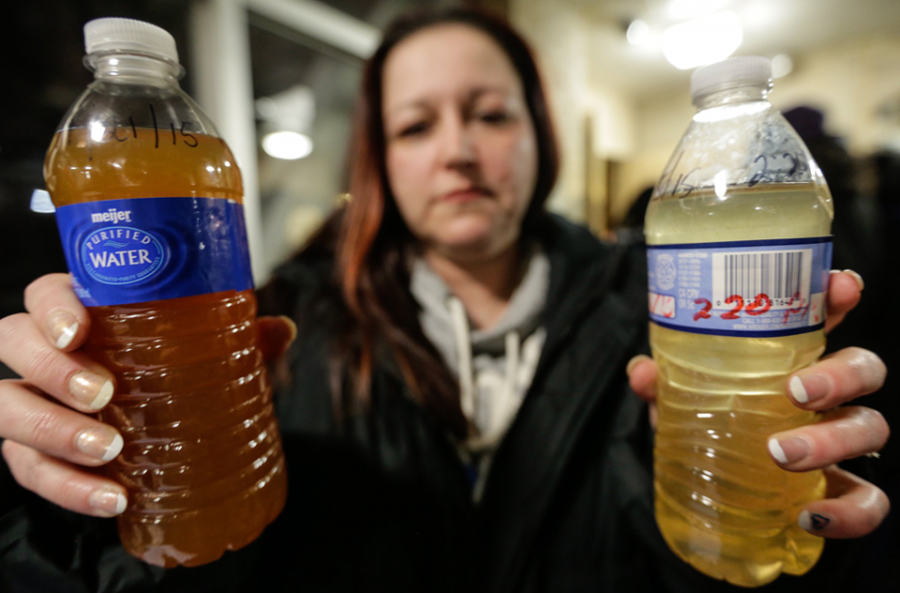Update: Flint Water Crisis And How To Get Involved
Courtesy of Ryan Garza/ Detroit Free Press
LeeAnne Walters presents tap water samples at a public meeting in January of 2015
December 21, 2016
On Monday, December 5th, the Senate passed a bill that provides $100 million to help fix the Michigan town Flint’s drinking water system. This system was contaminated by lead from old pipes when the water supply was switched from Lake Huron to the Flint River in April of 2014. The high levels of pollution in the river, combined with poor water treatment, led to a spike in bacteria and trihalomethane readings in what would become flint’s drinking water. The acidic water then corroded the old lead pipes, causing lead to seep into the water and cause widespread lead poisoning.
The bill also provides $50 million for healthcare for children who suffered lead poisoning, $20 million to forgive Flint’s drinking water loans, and $70 million to activate a $1 billion fund for low-interest loans to finance upgrades to water infrastructure. The same bill also authorizes drought relief for the state of California.
Money is also planned to be allocated to aid in the education of children affected by the Flint water crisis. According to the World Health Organization, “lead affects children’s brain development, resulting in reduced intelligence quotient (IQ), behavioral changes such as shortening of attention span and increased antisocial behavior, and reduced educational attainment. Lead exposure also causes anemia, hypertension, renal impairment, and toxicity to the reproductive organs. The neurological and behavioral effects of lead are believed to be irreversible.”
The House passed its own water bill the following Thursday, providing $170 million for Flint. The Senate version contains $50 million more to provide funds for communities nationwide.
In addition to this bill and the prospective aid that will be provided to Flint, there are also systems that are in place right now to help people nationwide get involved in the effort to help the town and other communities like it that are going through water crises.
Below are some ways to get involved in the relief efforts.
- Flint Water Fund
This fund was set up by the United Way of Genesee County in order to collect money for filters, bottled water, emergency support services and prevention efforts. 100% of the donations go to Flint. This group has already sourced more than 1,000 filter systems and 5,000 replacement filters, and continues to provide bottled water to the Food Bank of Eastern Michigan and other distributors.
Website for donation: http://www.unitedwaygenesee.org/civicrm/contribute/transact?reset=1&id=5
- The Community Foundation for Greater Flint
This foundation has raised almost 11 million dollars for the Flint Child Health and Development Fund and has awarded $1,992,200 in grants. Their main projects involve crisis response, optimal child health and development, early childhood education, continuous access to a pediatric medical home, access to infant and child behavioral health services, nutrition education, healthy food access, safe and healthy home environments, integrated social services, and research.
This organization’s website is as follows: flintkids.org
Address for donations:
Foundation for Flint
Community Foundation Building
500 S. Saginaw St., Suite 200
Flint, MI 48502
If you want to stay updated:
Flint officials, such as Senator Jim Ananich, regularly tweet about the crisis and advancements of Flint. Michigan. His handle is @jimananich.
Many online, print, and television sources also continue to cover the Flint water crisis. In light of advancements such as the decisions of the house and senate, now becomes a critical time in the shaping of Flint’s future and thus a prime opportunity to get involved and make a difference.




